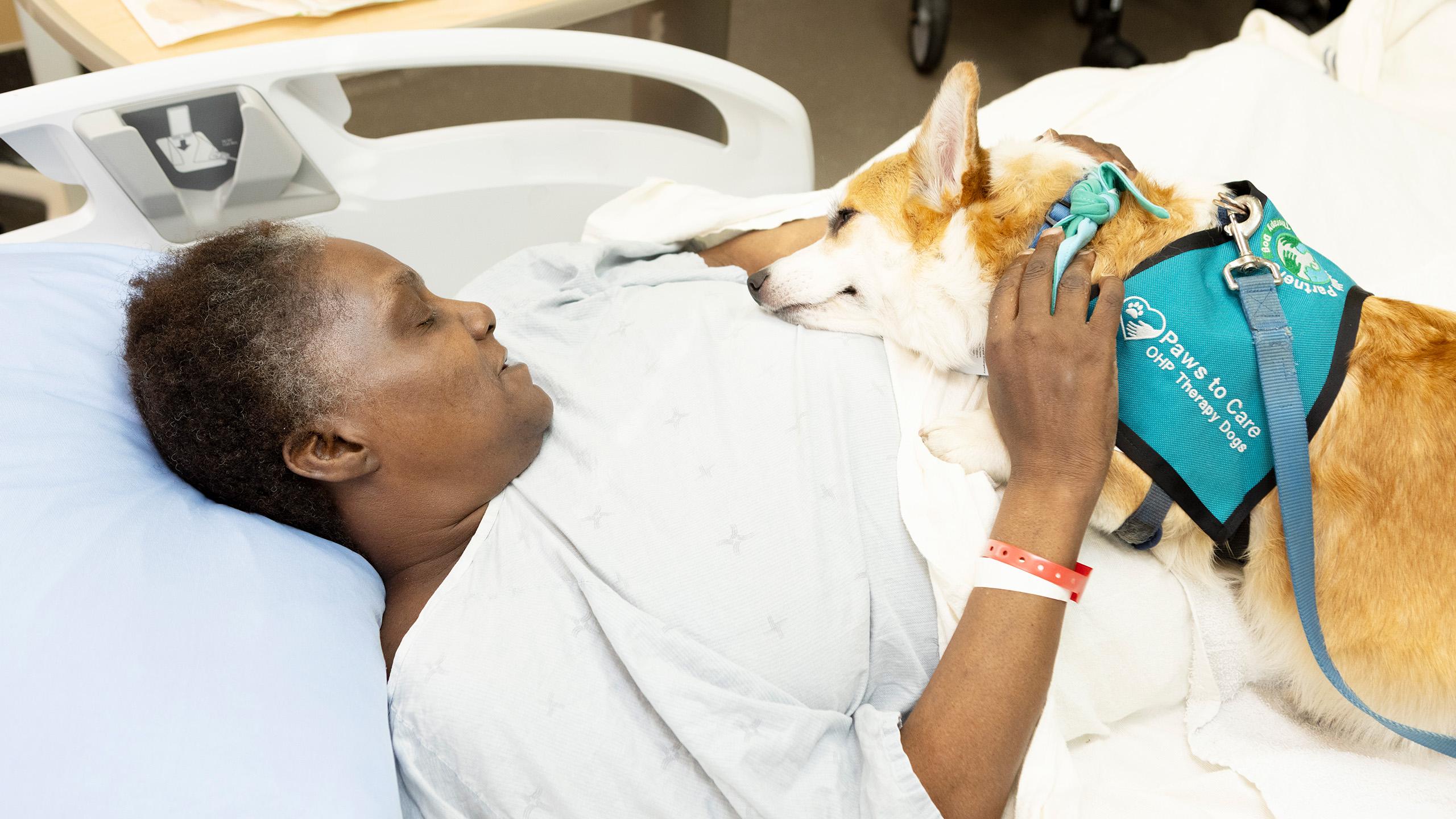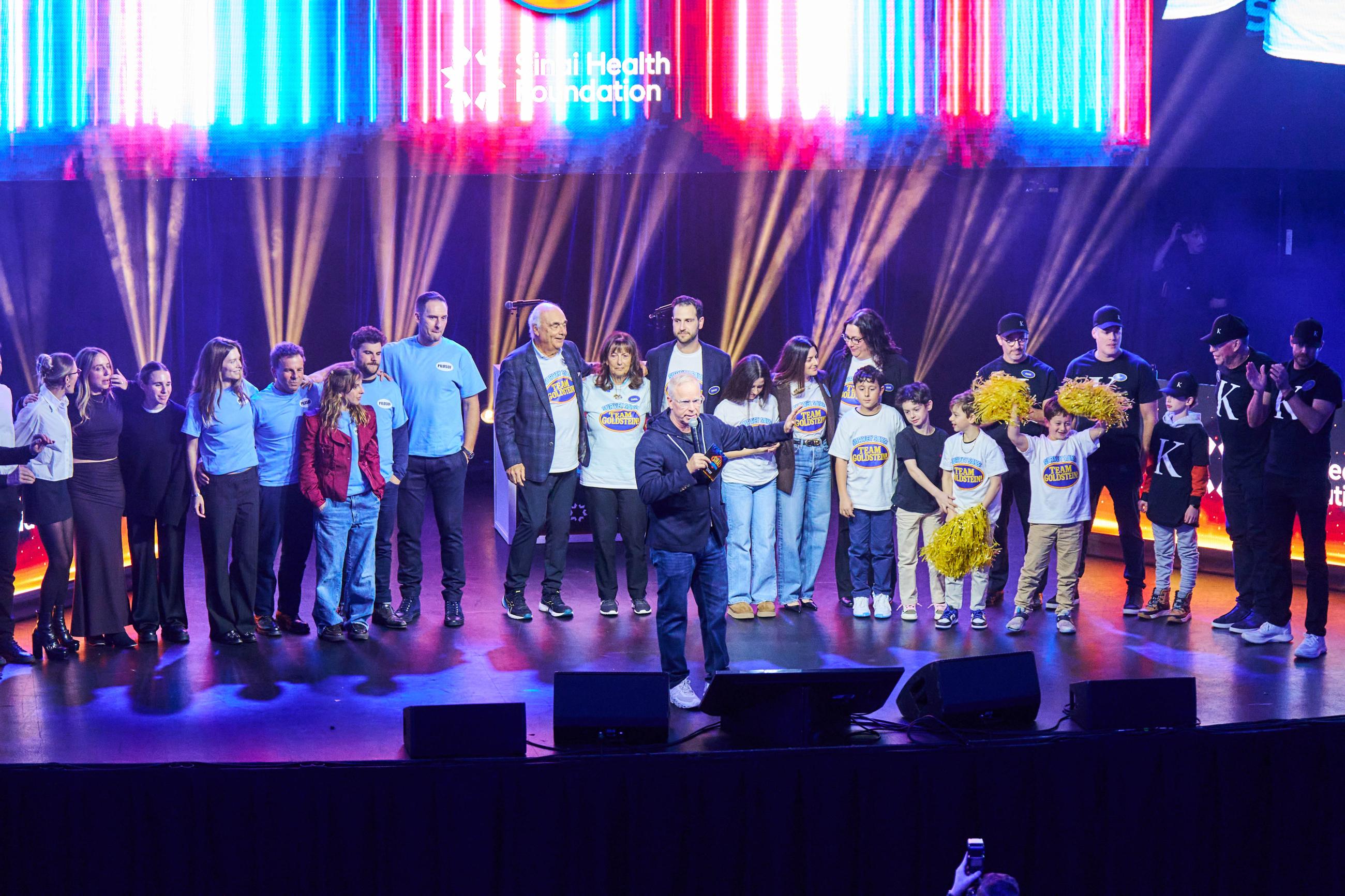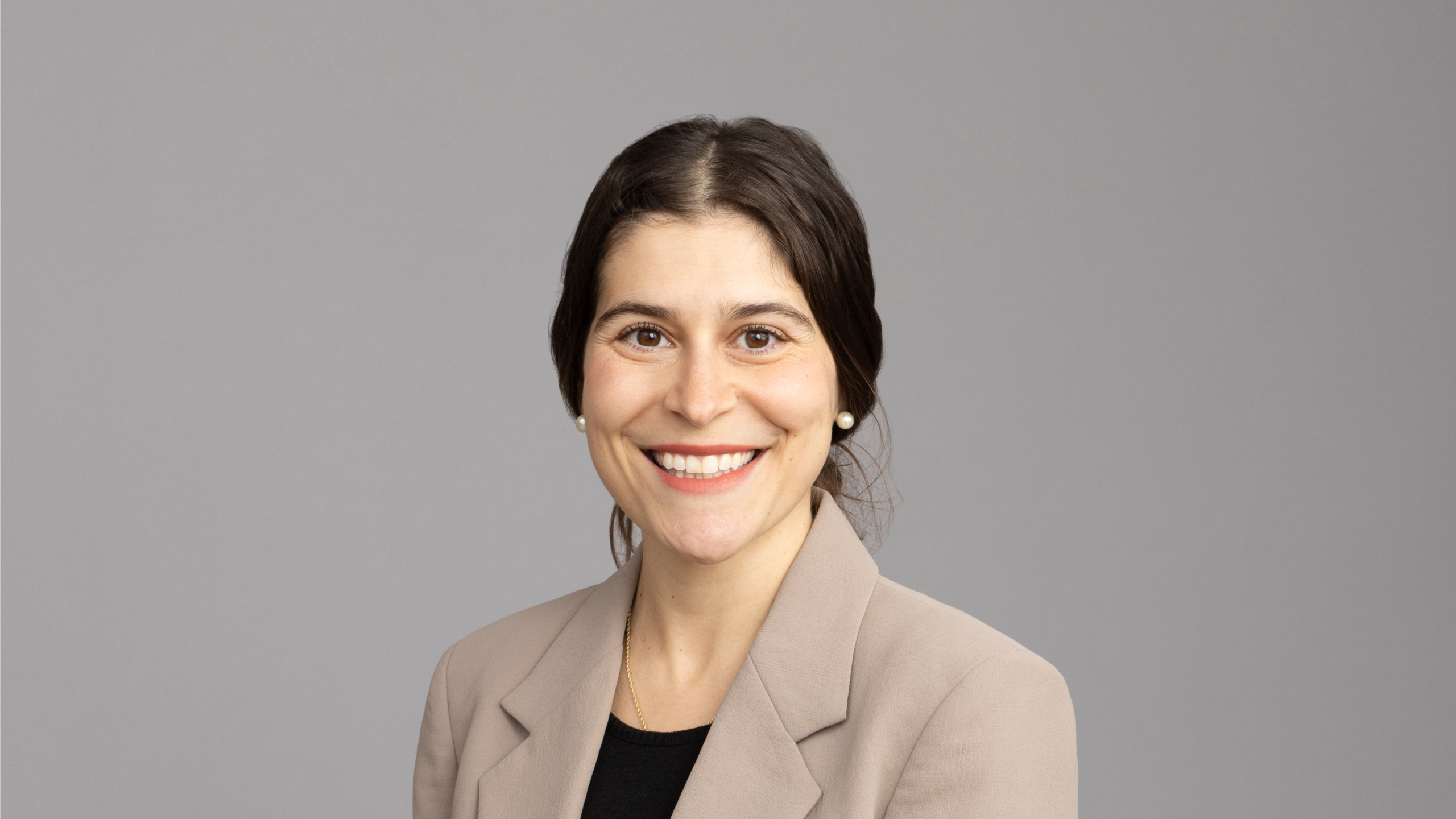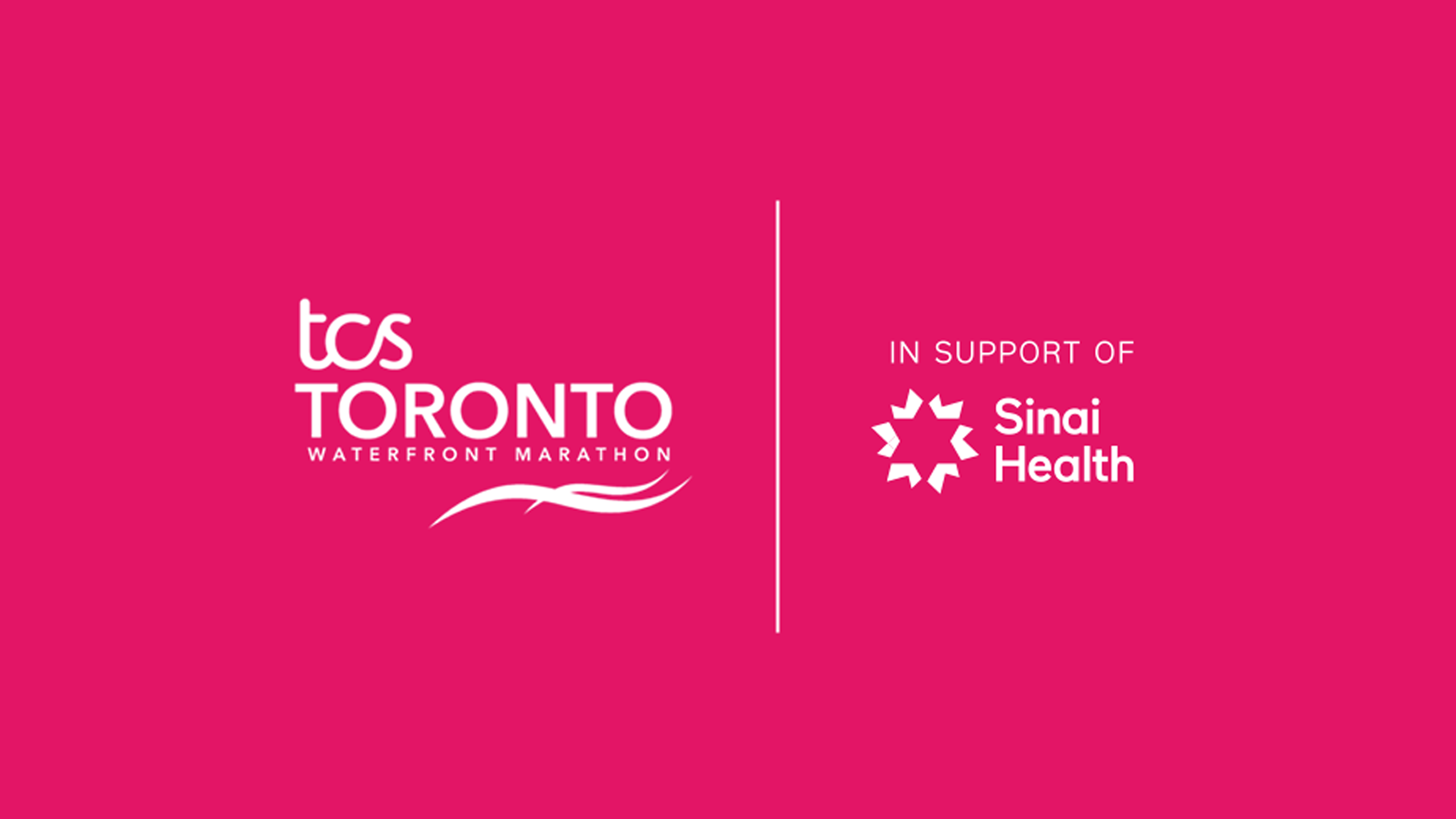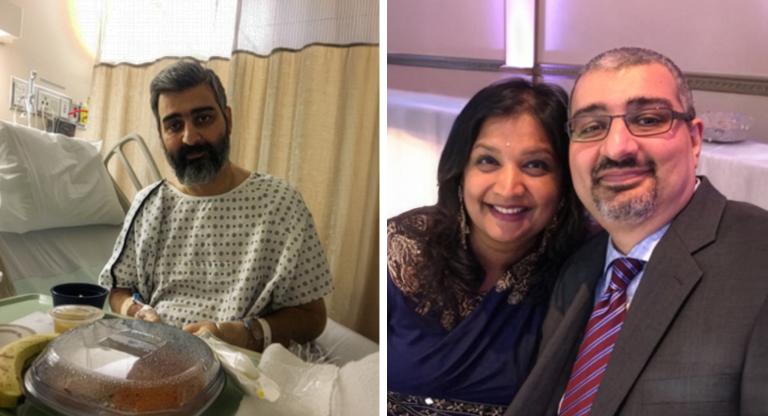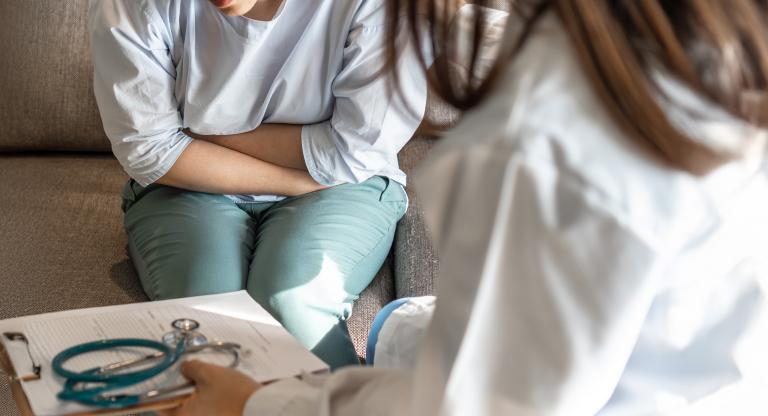Donor-powered technology helped Rob recover his stride
Rob Broberg’s wife was the first to notice the unusual swelling on the back of his left hip. “Because I wasn’t experiencing any pain, I didn’t even realize it was there,” recalls Rob, a 56-year-old software developer in Waterloo, Ontario.
Rob followed up with his family doctor, who ordered X-rays the same day. “Right away, she was concerned that we were dealing with some kind of sarcoma,” says Rob. His doctor sent Rob for more detailed imaging. Once those scans came back, she forwarded them to Mount Sinai Hospital, “based on Mount Sinai’s expertise in dealing with sarcomas,” says Rob.
At Mount Sinai, Rob was referred to Dr. Jay Wunder, previous Surgeon-in-Chief at Sinai Health and head of its renowned sarcoma program. The Hospital, which has the largest multi-disciplinary sarcoma program in Canada, ranks among the top three in the world for sarcoma research, clinical care and education, and offers specialized expertise for patients with typical, rare, and complex bone and soft tissue sarcomas.
Dr. Wunder diagnosed Rob with a pelvic chondrosarcoma, a type of rare bone cancer that develops from cartilage tissue. He explained that treatment would involve extensive surgery to remove, or resect, the tumour. At 16 cm, Rob’s tumour was sizable and deeply embedded in his pelvic bone and muscles, surrounded by complex anatomy including important nerves and blood vessels, making resection especially challenging.
“It was quite alarming,” Rob recalls, “seeing how large this foreign material in my hip was.”
Advanced imaging meets surgical precision
It was during this first meeting with Dr. Wunder that Rob first heard about Mount Sinai’s specialized sarcoma research program for viewing and manipulating 3-dimensional images, including MRI and CT scans, to facilitate improved surgery. Guided Therapeutics (GTX) is one of the few operating rooms in Ontario with 3D CT in-room imaging capabilities. An interprofessional team, including engineers and cancer surgeons from Sinai Health and the University Health Network (UHN), collaborated for over a decade to develop and customize navigation hardware and software specifically for the resection of sarcomas originating in or involving bone.
GTX technology helps show the surgeon precisely where to cut around the tumour in real time during surgery, allowing for more precise cuts and safer tumour resection margins, to help ensure there is a rim of healthy normal tissue, free of cancer cells, surrounding the tumour to minimize the risk of tumour relapse. Precise margins are especially crucial when a tumour is close to critical structures, such as in the pelvis. When it’s time to reconstruct the area, using a bone graft or prosthesis, GTX acts as a reverse map to guide the process accurately.
Dr. Wunder has described the technology as Google Maps for surgeons.
Dr. Peter Ferguson, an orthopaedic oncology surgeon at Sinai Health and colleague of Dr. Wunder, who has also been involved in sarcoma GTX development, says that with complex anatomy like the pelvis, surgeons often have to cut through the bone to resect the tumour. “In that situation, navigation is really important for us to ensure we don't accidentally cut into the tumour,” he says. “We also need to preserve as much normal tissue as possible for reconstructive purposes.”
Rob recognized the value of the technology from the beginning. “I understood right away,” he says, “that with GTX, Dr. Wunder’s team had the technology to minimize the extent of the margins and having to cut out more good bone and good muscle and other material I really hoped I’d keep.”
Dr. Wunder explained to Rob that the stability of his hip bone following surgery would depend on how much of the pelvic bone would have to be removed during the operation. Rob’s biggest worry about the surgery was the risk to his mobility. “I was most concerned about whether I’d be able to walk again and be able to do the things I love, like hiking and playing hockey,” says Rob. “And before the operation, Dr. Wunder couldn’t guarantee whether I’d be able to walk without some kind of aid, like a walker or cane.”
Rob’s surgery on January 8, 2024, lasted 10 hours.
Fortunately, it went very well. “They told me they had removed all of the tumour, and had been able to keep a large portion of my pelvic bone,” Rob says, “which was really good news for post-recovery mobility.”
Without GTX, Dr. Wunder says the team likely would not have been able to save as much of the pelvic bone as they did. “Without that precise navigation, we may have had to take out more bone to be safe,” he says. “But with it, we were able to keep enough bone to maintain the structural stability of the pelvis.” In addition, Dr. Wunder performed a novel type of muscle transfer to reconstruct Rob’s hip abductor muscles, which had been invaded by the tumour and were therefore resected together with the bone sarcoma. This combination of bone sparing via GTX navigation and hip muscle reconstruction should help to optimize Rob’s long-term recovery.
Reduced recovery time and enhanced mobility
Rob was able to put weight on the affected leg on the first day out of surgery. “The post-op team wanted to get me mobile as quickly as possible so I could start stretching the muscles.”
After a week at Mount Sinai, Rob moved to Hennick Bridgepoint Hospital (HBH), where he remained for three weeks. “At Bridgepoint, I went through walking motions with a walking aid, with staff helping me concentrate on step, rhythm and direction,” says Rob. “It took a while, but the brain adapts quickly. And I'm back to walking pretty close to normal.”
Today, Rob works with a personal trainer on rebuilding his overall strength and mobility. “My range of motion on my left hip is almost as good as on my right. Some movements — I might pivot or do something weird — might feel a bit awkward, but most of the time, it's fine.”
“Instead of being on crutches for three to six months, having one leg shorter, or limping for the rest of his life, Rob’s in good shape,” says Dr. Wunder. “It’s transformative.” He credits Sinai Health’s Renew Sinai initiative and ongoing donor support with making GTX possible. “This technology is important for pushing the boundaries of innovation,” he says.
Rob also considers philanthropy essential for innovation. “It allows the teams at Mount Sinai to explore new treatment methods and technologies like digital imaging,” he says. “That wouldn't happen if the hospital didn't have the funding to support research.”
Looking back on the care he received at Mount Sinai and HBH, Rob feels tremendous gratitude. “I feel blessed I had such a skilled and compassionate surgical team,” he says. “The way they welcomed me at my first visit really reassured me. They exuded a lot of confidence that they could care for my needs and look after me.”
You can support technological innovation leading to better outcomes
Mount Sinai Hospital’s Sarcoma Unit is the largest in Canada and among the largest worldwide. Led by Dr. Wunder and his team, it sees the highest patient volume and the most complex sarcoma cases in the country. Technology like GTX is furthering Sinai Health’s ability to train sarcoma surgeons from around the world and advancing the direction of new sarcoma clinical studies. With your ongoing support, we can advance the boundaries of innovation to help more patients like Rob reclaim their health. Donate today.
